

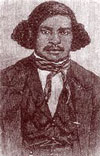
Stephen Bishop, a slave guide at Mammoth Cave, KY between 1838 and 1857 is known from fragments of fact, accounts both fictional and non-fiction, and from the original source: his autograph smoked or scratched on walls and ceilings of Mammoth Cave and Salts Cave. I first visited Mammoth Cave in 1937 as an 8-year-old and have been exploring Mammoth Cave ever since. I have co-authored four nonfiction books about Mammoth Cave, and have heard about Stephen Bishop most of my life. As an explorer and mapper myself, I could put myself into the man, who I concluded was curious, had vision, and worked hard. None of the accounts of his life captured for me the explorer's drive to discover, investigate, and enjoy the cave. 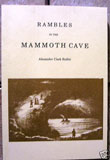
The first descriptive accounts of Stephen are written by Alexander Clark Bullitt in Rambles in the Mammoth Cave, During the Year 1844, by A Visiter (sic.). This guidebook refers to "Stephen" in passing as the intrepid guide and credits him with finding Gorin's Dome, crossing the Bottomless Pit, and discovering Mammoth Dome and Cleaveland Avenue. Rambles was published anonymously by Morton & Griswold, Louisville, KY in 1845 in several editions. The book was reprinted by Johnson Reprint Corporation, New York, NY in 1973, and the second reprint edition was published by Cave Books, St. Louis, MO, in 1985. Cave Books is the publishing and bookselling affiliate of the Cave Research Foundation. In an "Introduction to the (Second) Reprint Edition" Mammoth Cave Historian Harold Meloy identified Alexander Bullitt as the author of Rambles. Harold Meloy, the unofficial Historian of Mammoth Cave for many years, wrote comprehensively of how John Croghan, owner of Mammoth Cave, commissioned the guidebook. Meloy's twenty-five page historical note details the sequence of explorers, mappers, owners, and famous visitors. He provided the first extensive account of Stephen Bishop and his influence on subsequent publications about Mammoth Cave. Harold Meloy must be considered the primary historian of Stephen Bishop's exploits and accomplishments. His "Introduction" largely paraphrases his 1974 article "Stephen Bishop: the Man and the Legend" originally published in the Journal of Spelean History, and later reprinted in Caves, Cavers, and Caving, Bruce Sloane, Editor, Rutgers University Press, New Brunswick, NJ, 1977. When I wrote the "Historical Appendix" to The Longest Cave, by Roger W. Brucker and Richard A. Watson, Knopf, New York, NY, 1976, the sketch about Stephen Bishop was based largely on Meloy's work. I made an error in that sketch, saying that Charlotte Bishop became the wife of William Garvin, instead of the truth that she became the wife of the widower Nick Bransford. That error has been copied by writers who used the account in The Longest Cave as the source of their articles on Stephen Bishop. 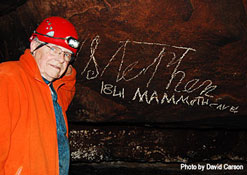
In 1983 I sent an outline of the book I intended to write to my literary agent, the late Roberta Pryor. She found slight interest in a novel about Stephen Bishop, and I turned to original research on Stephen by examining carefully the places he discovered and locations where his signature is found on walls and ceilings in Mammoth Cave. Accompanying his autograph sometimes is that of Charlotte Bishop in far reaches of the cave - places that I doubt that regular tours would have ventured. It became clear to me that Charlotte Bishop was a sturdy, intrepid caver in her own right to have accompanied Stephen so far into the cave. Charles Swedlund, beginning in 1988, compiled an ongoing database of historic names found on walls, ceilings, and rocks in Mammoth Cave, which provides a systematic gazetteer of explorer and visitor names, dates, and locations. This valuable research tool helped me learn at least some of the places that Stephen went, sometimes with Charlotte. By 1990 I had written first drafts of some of the chapters in my novel about Stephen Bishop, but did not pick up the project in earnest until 1999. The problem was how to tell the story. A third-person account of Stephen would not capture the obsession and passion of the cave explorer. I wanted to tell his story in first person, but who would read a book that began, "Let me tell you how I became the most famous cave explorer in the world…"? 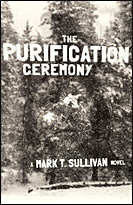
The stimulus was meeting Mark T. Sullivan, successful author of many novels, who was a student in my Speleology class which I have taught for more than a score of years for Western Kentucky University at Mammoth Cave. I always ask my students what they want to DO as a result of taking my class. Mark Sullivan said he wanted to write a thrilling cave novel, and hoped to gain insight and experiences to make it realistic. He let me read his novel, The Purification Ceremony, Avon Books, 1998. In that story the narrator is a Native American woman bow hunter. Astounding, I thought-a man writing the viewpoint of a remarkable woman! I could write the novel about Stephen from Charlotte Bishop's point of view. I asked Sullivan how he did it. He said he asked some women authors who told him to show his manuscript to several women - they would tell him if he missed the female perspective. When I was deep into the writing I told an African American friend that I was writing a novel from the viewpoint of an African American woman slave. He said, "You'll be lucky to get any one of those right!" 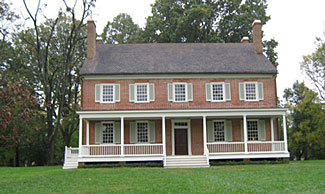
During the time I was writing and investigating Charlotte Bishop's background, I read dozens of slave narratives, novels about slaves, and nonfiction books about slavery. I visited Locust Grove, the homestead of John Croghan and his family in Louisville, KY. I talked with Phil DiBlasi, an archaeologist who had investigated Locust Grove. In 2004 a children's novel was published, Journey to the Bottomless Pit: The Story of Stephen Bishop", by Elizabeth Mitchell, Viking Juvenile, 2004. Ms. Mitchell, a prolific author, had read the few accounts of Stephen Bishop and consulted the interpretive staff at Mammoth Cave National Park. Her third-person account describes an obedient and politically correct little boy who stumbles into discoveries, makes a map, and is rewarded by being given a pretty mulatto girl to marry by his kindly owner.
In 2007 came a novel for young people, Underground, by Jean Ferris, Farrar, Straus and Giroux, 2007. It is written from Charlotte's point of view, by a woman author. When telling Stephen Bishop's story, I wanted to tell it from the point of view of a woman who had an obsession of her own. I invented running as her obsession. Charlotte would never understand Stephen's obsession otherwise. I equipped her with curiosity and tenacity - the resourcefulness to survive and live a rich life under the cloak of slavery. I have attempted to tell the story of real people with real motives and real accomplishment. Roger W. BruckerAuthor Grand, Gloomy, and Peculiar: Stephen Bishop at Mammoth Cave June 9, 2009 |
Copyright © Roger Brucker All rights reserved.
Designed & Hosted by
Unlimited Media